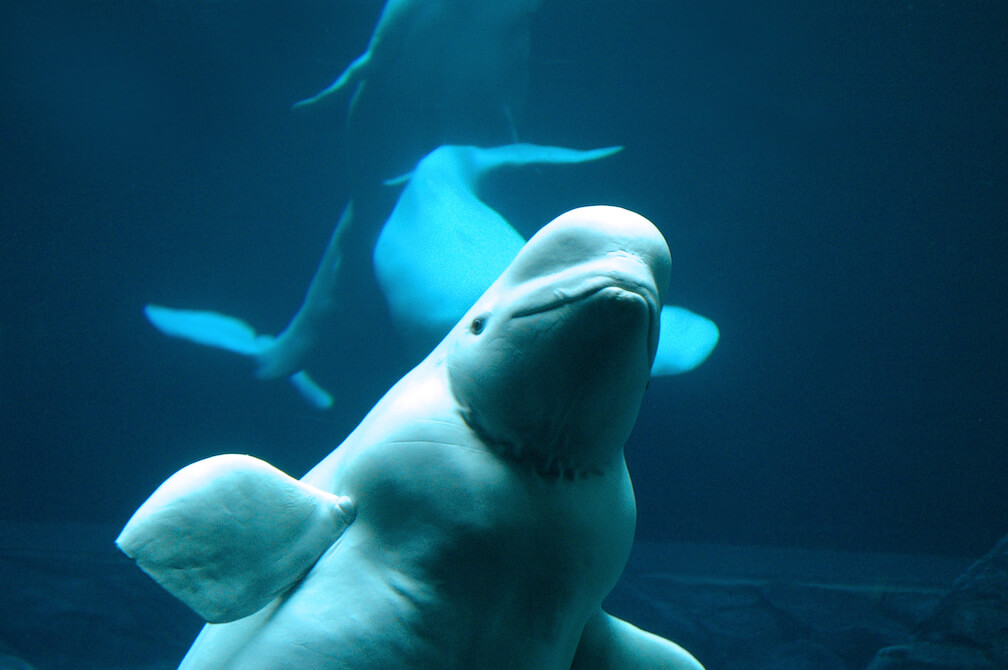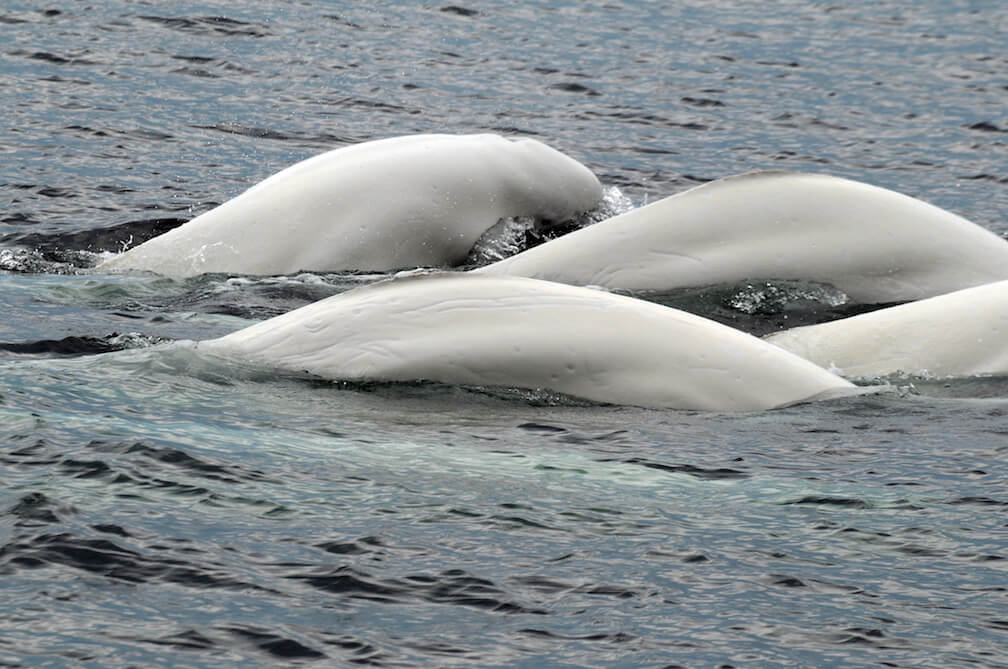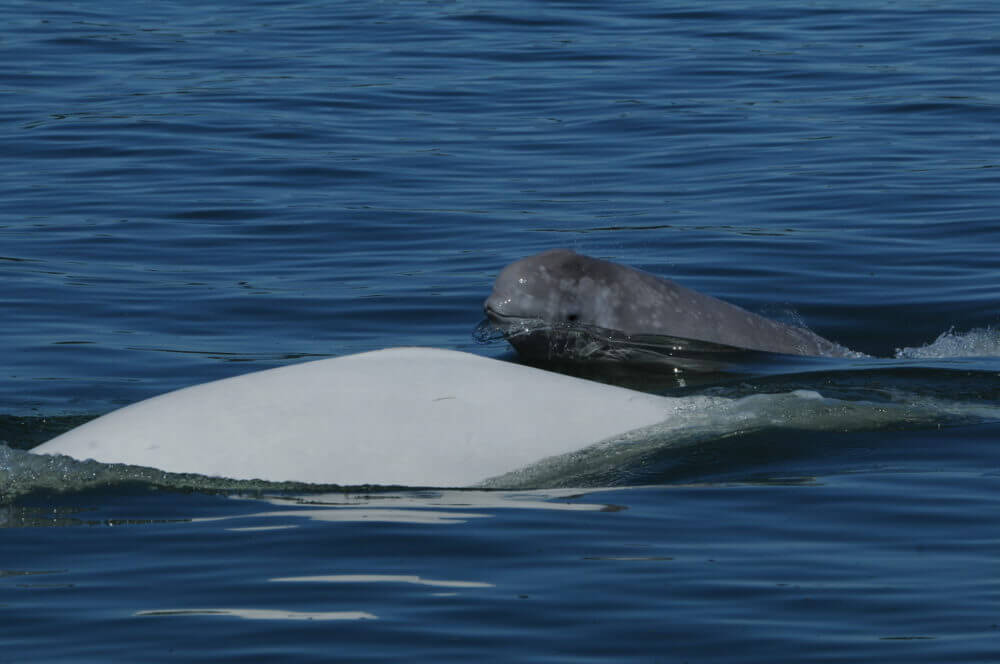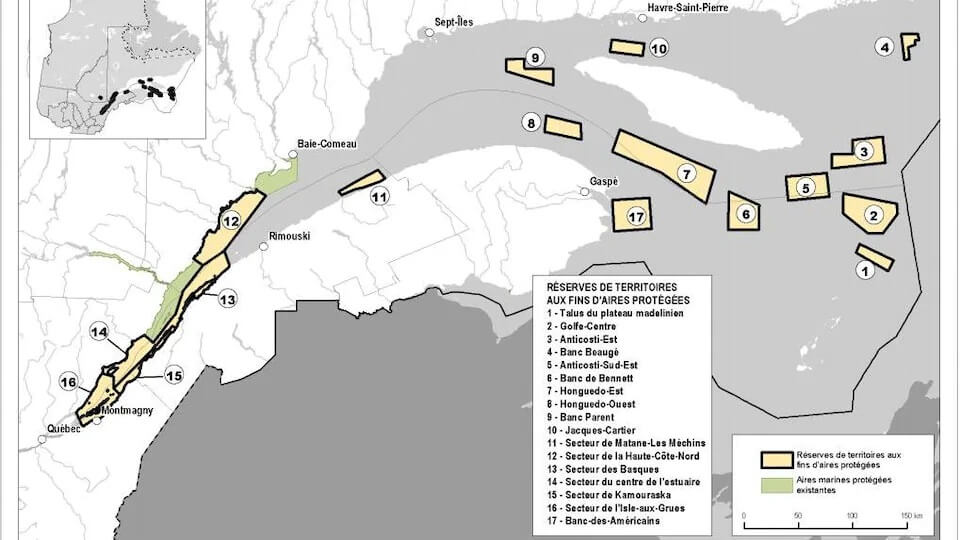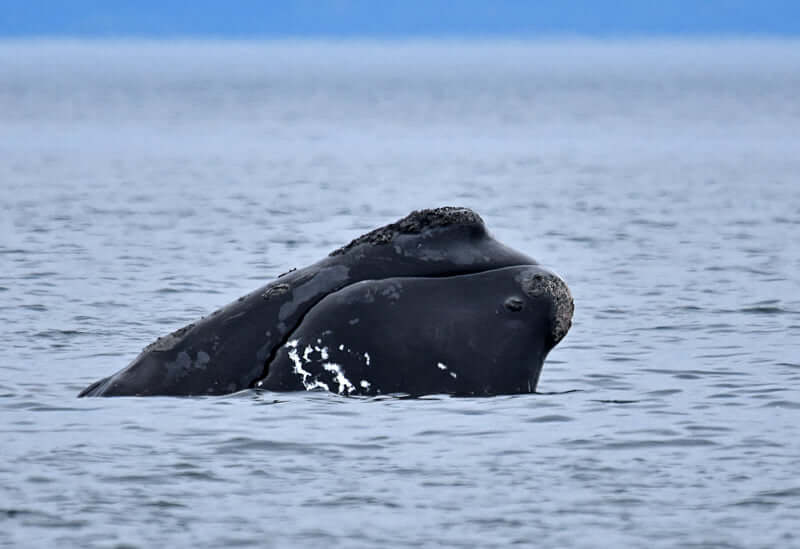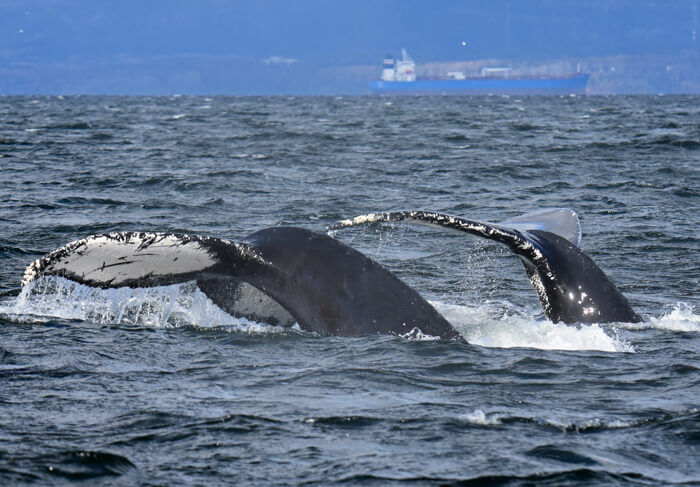In the realm of conservation and research, long-term efforts to further our knowledge about cetaceans and protect them continue. This is how we can stay optimistic: by keeping in mind the exciting breakthroughs and projects that are being carried out for whales. They always manage to amaze us with their ability to adapt and, in many cases, regain their resilience.
Observation and analysis of marine mammal behaviour yield concrete results. To help our readers stay hopeful, this article presents several pieces of encouraging news on the subject.
Hope as a driver
For Robert Michaud, president and scientific director of the Group for Research and Education on Marine Mammals (GREMM), as long as whales exist, there is hope.
For the past 35 years, the researcher has notably focused on the St. Lawrence beluga population. He is therefore well positioned to see the gains, but also the losses that this population has experienced, especially over the past ten years. And belugas are not the only ones at risk in the St. Lawrence.
How is it possible not to simply give up?
“It’s easy to feel a sense of despair when working with a population considered threatened since 1983 and recently uplisted to endangered. My motivation comes from the actions taken over the past few years that are helping belugas in a concrete way. My bet is that, through science, we can speed things up and enhance their protection,” explains Mr. Michaud.
Sea canary still singing
St. Lawrence belugas spend their entire lives in these waters. The Saguenay-St. Lawrence Marine Park plays a pivotal role in the protection of their populations. For example, it is forbidden to operate personal watercraft, fly over the Marine Park at an altitude of less than 2,000 feet or land within its boundaries, fly a drone for recreational purposes or practise any type of towed water sport. A distance of 400 m is also in force between ships and endangered species, including the beluga. This measure was deemed so pertinent that it is now in effect throughout the Estuary.
In the summer months, the entrance to Baie Sainte-Marguerite is a comprehensive preservation zone. Many of the females found here are accompanied by their young. Every year, watercraft are prohibited from operating in this area between June 21 and September 21. Recreational fishermen, kayakers and canoers can travel along a restricted corridor, but are not permitted to stop. Fisheries and Oceans Canada as well as Parks Canada conduct boat patrols to educate recreational boaters.
What about research? For the past five years, GREMM has been able to carry out observations by using drones. A project aimed at observing social behaviours in these cetaceans has raised new questions about the social structure of groups comprising females and calves. Nevertheless, we now have a better understanding of the relationships between females within a group and how the species is able to withstand environmental pressures.
In fact, females can be wonderful “babysitters” for the offspring of other females in their group, thereby providing added security.
The narwhal first observed in the St. Lawrence in 2016 is still keeping company with the belugas that have accepted it like one of their own. Observed again this year, this individual seems to be adapting to the lifestyle of its “cousins”. Once again, observing this oddity provides insight into the social relations of belugas and how whales are able to adapt.
Protected areas on the drawing board
This past fall, a a moratorium on an increase in shipping traffic in the Saguenay was recommended on account of the still relatively quiet nature of this sector. This measure aims to preserve the belugas’ living environment in its current state. In December, the Government of Quebec announced the addition of two marine protected areas spanning a total of 1,060 km2. This announcement comes on the heels of a project announced last September to designate “territories for the purposes of a protected area” in the Gulf of St. Lawrence and its Estuary. With the addition of these new conservation areas, the percentage of Quebec’s marine areas under protection would mushroom from 1.3% to over 10%.
Though not discussed in the recent announcements, these marine territories would be a good way to establish acoustic refuges. Noise pollution is a major threat to the St. Lawrence beluga population. Such protected places would offer these whales sanctuary for communication, orientation, feeding and socialization.
This administrative measure allows territories that are being considered for the preservation of their marine ecosystems to be exempt from industrial activities before they are officially designated as a reserve, which is a lengthy process. Concretely, “mining, oil and gas activities as well as the exploitation of hydroelectric power and any commercial or industrial energy production” are prohibited in these areas, mentioned Quebec’s Ministry of the Environment and Climate Change.
Measures that seem to be bearing fruit
With an estimated population in 2020 of fewer than 400 individuals, the North Atlantic right whale is endangered. The number of births is insufficient to compensate for the number of mortalities, which are mainly linked to human activities. Nevertheless, Scott Kraus, a researcher at the New England Aquarium, argues in a newsletter of the North Atlantic Right Whale Consortium (NARWC) that as long as hunting is prohibited and calves are being born, there are grounds for hope.
That’s not all. Not a single right whale carcass was found in Canadian waters this year. It is possible that the new measures introduced last May to reduce the risk of collisions and entanglement in fishing gear are having a positive impact.
Humpback whales in good shape
Over the past few decades, several populations of humpback whales have seen their numbers trend upward. The western North Atlantic population has been classified as “Not at Risk” since 2003, after being designated “Special Concern” in 1985. This recovery is particularly gratifying when one considers that commercial whaling had decimated 90 to 95% of its global population. One sign that humpbacks are doing better: four successive generations were observed in the St. Lawrence in 2020.
We should point out the positive impact that recovery actions (article in French) have had on humpbacks. Such a comeback was made possible by a 1986 moratorium on commercial hunting. Marine sanctuaries are also playing a considerable role in conservation.
Citizen action: a lever in the fight against climate change
“Bernard Émond believed that ‘Beauty can save the world.’ Indeed, there is great beauty in taking action for conservation, even if the immediate outcome of the efforts is unknown,” says biologist Robert Michaud. This beauty is not only present in these enigmatic mammals that have the gift of moving us, but also in the actions of each person who strives to protect our planet and its inhabitants.
“Despite the difficulties we faced this year, citizens everywhere continued to mobilize to protect the environment. Major victories have been scored, such as the confirmation by the Supreme Court of Canada of the legitimacy of protecting the chorus frog and all endangered species, and Quebec reaching its target of setting aside 17% of its territory in the form of protected areas. Nature Québec is confident that with the population’s support, we will be able to chalk up many more achievements in 2021 to combat the biodiversity and climate crises,” mentions Alice-Anne Simard, executive director of Nature Québec, a nature conservation organization.
So let’s give ourselves the gift of hope with a few easy-to-adopt actions to improve the plight of whales. Examples might include, among other things, reducing our consumption of imported goods to avoid increasing maritime traffic, reducing our waste stream and supporting research groups. Interested in joining a collective initiative? This year, the citizen group Mission 100 tonnes achieved its goal of removing 100 metric tonnes of waste from the oceans. The project continues and is even gaining momentum!
Support for research groups is essential in order to gain a better grasp of the general state of whale populations and their long-term trends. GREMM is relentlessly continuing its research to further our knowledge of the populations inhabiting the St. Lawrence.
By staying current about what is happening in the whales’ world, we can make informed choices.
We must continue to believe that a brighter future is possible. New challenges are emerging, but marine mammals have shown us that they can adapt, and that alone is enough to maintain hope.


